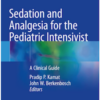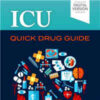Dexmedetomidine, Almost As Many Uses As There Are Letters
emdocs.netThere is literature to support the use of dexmedetomidine in patients with sympathomimetic toxidrome. It may be a reasonable approach to utilize Dex, with or without a bolus, while closely monitoring these patients in an ED setting.
In patients having difficulty tolerating non-invasive ventilation, Dex may assist in promoting compliance and possibly decreasing the rate of intubation when compared to benzodiazepines.
Dex has a well-established role in sedation in the post-extubation setting, and may have a role in ED extubations, although this has not been studied.
In pediatric patients, Dex promotes compliance with procedural and imaging sedation with a longer onset of action and longer duration of action compared to propofol and benzodiazepines. Dex is associated with a decreased risk of requirement of airway intervention compared to propofol.
Although bradycardia and hypotension are common reasons for not using Dex, this has been consistently shown across multiple indications to rarely affect the choice of sedation and have not been shown to cause increased morbidity and mortality. Propofol has similar rates of hypotension and bradycardia in comparable large studies.

















